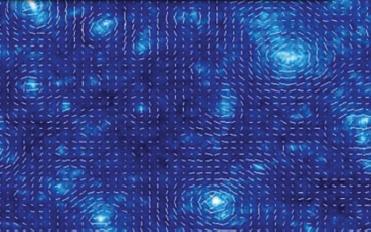
The weak lensing of fainter and more distant structures must be detected by statistical averaging. weak lensing simulation by Bhuvnesh Jain, Uro� Seljak, and Simon White. Berkeley National Laboratory Photo.
BERKELEY, CALIFORNIA (BNS): Astronomers recently made a major progress in extending the use of gravitational lensing to the study of much older and smaller structures in the Universe.
According to a news release by the Berkeley National Laboratory, the team led by a cosmologist from the U.S. Department of Energy�s Lawrence Berkeley National Laboratory were able to establish an important scaling relationship for nearby clusters between their total masses, determined by gravitational lensing, and the brightness of their x-ray emissions, an indication of the mass of the ordinary matter alone.
�We�ve been able to extend measurements of mass to much smaller structures, which existed much earlier in the history of the Universe,� said Alexie Leauthaud, a Chamberlain Fellow in Berkeley Lab�s Physics Division, as reported in the release.
Till now, weak lensing was limited to calculating the total mass of relatively nearby groups and clusters of galaxies only.
Leauthaud also said that the study helps us gain a better understanding of the relationship between the normal matter in dense structures as measured by the weak lensing.
According to an article by ESA, gravitational lensing occurs because mass curves the space around it, bending the paths along which rays of light travel: the more mass (and the closer it is to the centre of mass), the more space bends, and more the image of a distant object is displaced and distorted. Thus measuring distortion, or 'shear', is key to measuring the mass of the lensing object.
In weak gravitational lensing, the shear is too subtle to be seen directly, but faint additional distortions in a collection of distant galaxies can be calculated statistically, and the average shear due to the lensing of some massive object in front of them can be computed.
 Previous Article
Previous Article Next Article
Next Article













The Indian Air Force, in its flight trials evaluation report submitted before the Defence Ministry l..
view articleAn insight into the Medium Multi-Role Combat Aircraft competition...
view articleSky enthusiasts can now spot the International Space Station (ISS) commanded by Indian-American astr..
view article